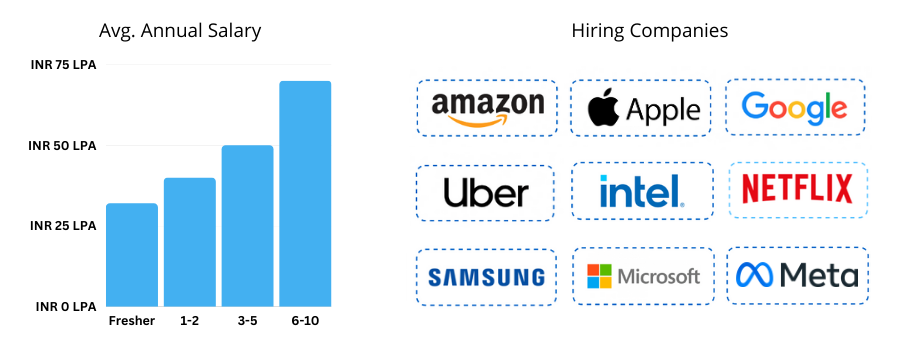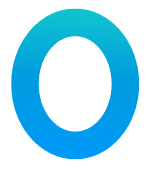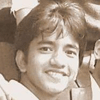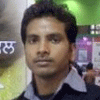Hands-On Labs Labs(62)
 Java: Count the frequency of an element in an Array
Java: Count the frequency of an element in an Array
00:20:00
 Java: Find all triplets with zero sum
Java: Find all triplets with zero sum
00:20:00
 Java: Leaders in an array
Java: Leaders in an array
00:20:00
 Java: Meeting Rooms
Java: Meeting Rooms
00:25:00
 Java: Merge Two Sorted Arrays
Java: Merge Two Sorted Arrays
00:20:00
 Java: Minimum Number of Jumps to Reach End in Array
Java: Minimum Number of Jumps to Reach End in Array
00:25:00
 Java: Move all Zeros to the beginning of an array
Java: Move all Zeros to the beginning of an array
00:25:00
 Java: Remove Duplicates from an Array
Java: Remove Duplicates from an Array
00:20:00
 Java: Rotate a Matrix by 90 degrees
Java: Rotate a Matrix by 90 degrees
00:25:00
 Java: Rotate an Array to the left
Java: Rotate an Array to the left
00:20:00
 Java: Find the length of the largest subarray with 0 Sum
Java: Find the length of the largest subarray with 0 Sum
00:25:00
 Java: Longest Increasing Consecutive Subsequence
Java: Longest Increasing Consecutive Subsequence
00:25:00
 Java: Find Whether an Array is a Subset of Another Array
Java: Find Whether an Array is a Subset of Another Array
00:20:00
 Java: Camel Case of a given Sentence
Java: Camel Case of a given Sentence
00:20:00
 Java: Count ways to increase LCS length of two Strings by one
Java: Count ways to increase LCS length of two Strings by one
00:25:00
 Java: Minimum rotations required to get the same string
Java: Minimum rotations required to get the same string
00:15:00
 Java: Multiply Large Numbers represented as Strings
Java: Multiply Large Numbers represented as Strings
00:25:00
 Java: Find Itinerary from a given list of tickets
Java: Find Itinerary from a given list of tickets
00:25:00
 Java: Construct a linked list from 2D matrix
Java: Construct a linked list from 2D matrix
00:30:00
 Java: Convert given Binary Tree to Doubly Linked List in Linear Time
Java: Convert given Binary Tree to Doubly Linked List in Linear Time
00:25:00
 Java: Count Nodes in Circular Linked List
Java: Count Nodes in Circular Linked List
00:25:00
 Java: Delete all Prime Nodes from a Doubly Linked List
Java: Delete all Prime Nodes from a Doubly Linked List
00:35:00
 Java: Deletion from a Circular Linked List
Java: Deletion from a Circular Linked List
00:35:00
 Java: Remove Duplicates from a sorted Linked List
Java: Remove Duplicates from a sorted Linked List
00:25:00
 Java: Reverse a Doubly Linked List
Java: Reverse a Doubly Linked List
00:20:00
 Java: Traversal of Circular Linked List
Java: Traversal of Circular Linked List
00:25:00
 Java: Reverse a Stack using Recursion
Java: Reverse a Stack using Recursion
00:25:00
 Java: Find next right node of a given key
Java: Find next right node of a given key
00:30:00
 Java: Traversing directory in Java using BFS
Java: Traversing directory in Java using BFS
00:20:00
 Java: Delete consecutive same words in a sequence
Java: Delete consecutive same words in a sequence
00:25:00
 Java: Sort a Stack using another stack
Java: Sort a Stack using another stack
00:30:00
 Java: Minimum time required to rot all oranges
Java: Minimum time required to rot all oranges
00:40:00
 Java: Next Greater Element
Java: Next Greater Element
00:30:00
 Java: Trapping rain water
Java: Trapping rain water
00:30:00
 Java: Largest rectangle in histogram
Java: Largest rectangle in histogram
00:25:00
 Java: Check whether a Binary Tree is BST or Not
Java: Check whether a Binary Tree is BST or Not
00:30:00
 Java: Deletion in a Binary Tree
Java: Deletion in a Binary Tree
00:40:00
 Java: Check if two nodes are cousins in a Binary Tree
Java: Check if two nodes are cousins in a Binary Tree
00:50:00
 Java: Check whether the two Binary Search Trees are Identical or Not
Java: Check whether the two Binary Search Trees are Identical or Not
00:35:00
 Java: Find the Closest Element in Binary Search Tree
Java: Find the Closest Element in Binary Search Tree
00:35:00
 Java: Convert Binary Tree to Doubly Linked List
Java: Convert Binary Tree to Doubly Linked List
00:50:00
 Java: Height of a Generic Tree from Parent Array
Java: Height of a Generic Tree from Parent Array
00:50:00
 Java: Insertion in a Binary Tree in Level Order
Java: Insertion in a Binary Tree in Level Order
00:35:00
 Java: Find right Sibling of a binary tree with parent pointers
Java: Find right Sibling of a binary tree with parent pointers
00:40:00
 Java: Find Distance between two nodes of a Binary Tree
Java: Find Distance between two nodes of a Binary Tree
00:50:00
 Java: Binary Tree to Binary Search Tree Conversion
Java: Binary Tree to Binary Search Tree Conversion
00:40:00
 Java: Ceiling in a Sorted Array
Java: Ceiling in a Sorted Array
00:25:00
 Java: Count 1’s in a Sorted Binary Array
Java: Count 1’s in a Sorted Binary Array
00:20:00
 Java: Find a Fixed Point (Value equal to Index) in given Array
Java: Find a Fixed Point (Value equal to Index) in given Array
00:25:00
 Java: Search an Element in a Sorted and Rotated Array
Java: Search an Element in a Sorted and Rotated Array
00:30:00
 Java: Two Elements whose Sum is Closest to Zero
Java: Two Elements whose Sum is Closest to Zero
00:30:00
 Java: Search in an Almost Sorted Array
Java: Search in an Almost Sorted Array
00:25:00
 Java: Median of Two Sorted Arrays of Different Sizes
Java: Median of Two Sorted Arrays of Different Sizes
00:30:00
 Java: A Pair with a Given Sum in the Rotated Sorted Array
Java: A Pair with a Given Sum in the Rotated Sorted Array
00:25:00
 Java: Sort Elements by Frequency
Java: Sort Elements by Frequency
00:30:00
 Java: Sort a Linked List of 0s, 1s and 2s
Java: Sort a Linked List of 0s, 1s and 2s
00:35:00
 Java: Find Missing Elements of a Range
Java: Find Missing Elements of a Range
00:25:00
 Java: Sort a Nearly Sorted (or K sorted) Array
Java: Sort a Nearly Sorted (or K sorted) Array
00:20:00
 Java: Chocolate Distribution Problem
Java: Chocolate Distribution Problem
00:30:00
 Java: Minimum Swaps required to convert binary tree to binary search tree
Java: Minimum Swaps required to convert binary tree to binary search tree
00:30:00
 Java: Count Distinct Occurrences as a Subsequence
Java: Count Distinct Occurrences as a Subsequence
00:30:00
 Java: Sort a Matrix in all way Increasing Order
Java: Sort a Matrix in all way Increasing Order
00:20:00


 4.7/5
4.7/5






















